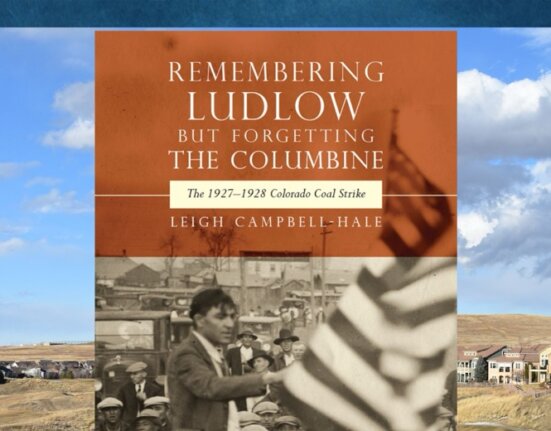Staughton Lynd, historian and longtime labor and social activist sent the following message and greeting to be read at the Closing Plenary of the LAWCHA National Conference in New York City, June 6-8, 2013. His greetings of solidarity were conveyed to the audience, but because of severe time constraints the message was not read at the session, but we are sharing it here with the wider LAWCHA community.
Greetings,
I grew up in New York City. I have particular associations with the neighborhood in which you are meeting. In the years 1958-1960, I was a so-called community worker for the University Settlement House at Rivington and Eldridge Streets, just south of Houston Street. There I met Frances Goldin, at the time a tenant organizer, not yet a literary agent. Together we helped to create an association of Cooper Square residents, the program of which was to resist the city’s plan to bulldoze the area round Cooper Union and to create high-income, gentrified housing. Instead we developed a program physically to rehabilitate the area mini-site by mini-site, in such a way that tenants would not be dispersed to the four winds but could continue to live in the neighborhood. Thirty years later I got a letter from David McReynolds of the War Resisters League saying that the Cooper Square Alternative Plan had been won, that he had temporarily been moved out of his apartment, and that when he had moved back in he no longer had to unplug the refrigerator in order to run the vacuum cleaner.
This then became our model for so-called “brownfield” redevelopment of steel mills in Youngstown when conglomerate owners sought to shut them down in 1977-1980.
And finally, I vividly recall an opportunity to hear from workers at restaurants, at grocery stores, for so-called “black car” transportation companies, in New York City,at a conference a few years ago I helped to call together along with Manny Ness, Alexis Buss of the IWW, and Andy Piascik then working with the Association for Union Democracy. That led on to an opportunity to reflect with Daniel Gross of the IWW about what had been learned in the campaign to assist the self-activity of workers at Starbucks.
Could I have been with you on this occasion, here would have been my message:
The mainstream trade union movement is in trouble. This may be not only a catastrophe, but an opportunity, a good thing.
It may well be that the NLRB will not be available for some time. If so, it creates the possibility of re-learning lessons learned by a century of rank-and-file warriors prior to the 1930s.
I was pleased to see the term “guerrilla history” in your program. Guerrilla history means looking to persons who are not academics, to ordinary workers, not only for facts, but for interpretations of their experience.
I have been guided by guerrilla historians such as John Sargent, first president of the CIO local at Inland Steel in northern Indiana, who said the 18,000 workers there were better off before the CIO became an exclusive collective bargaining agent; by Marty Glaberman, whose pamphlet “Punching Out” observed that he or she who becomes a steward where there is a typical CIO contract becomes obliged to enforce the no-strike clause; and Ed Mann, sometime president of Local 1462, United Steelworkers of America, who led us “down that hill” in January 1980 to occupy the US Steel administration building in Youngstown.
In a nutshell, here is what I learned from these Founding Brothers.
To understand how to fix something, you must first determine what went wrong.
We have a plethora of views about what went wrong with the CIO. Karl Klare believes it was Supreme Court decisions that eviscerated Section 7 of the Wagner Act. Jim Atleson says it was the culture of arbitration that developed during World War II when unions agreed not to strike. David Montgomery and others feel it was the Red-baiting that drove the most militant, persistent rank and filers out of the organized labor movement.
I think there is a fourth and more fundamental answer. I believe the CIO was the project of a dictator within his own union, John L. Lewis. I believe Lewis imposed on other industrial workers, on steelworkers, automobile assembly workers, packinghouse workers, the pattern of collective bargaining he had developed in the United Mine Workers. The elements were, and are:
- In every theater of organization, the union’s objective is to be an exclusive collective bargaining representative.
- An essential secondary objective is the dues checkoff: that is, for the employer to become the union’s dues collector and for the union thus to obtain an income stream that is not dependent on the membership.
- In exchange for these two desired elements, the union gives management the freedom to make all the big decisions unilaterally, the so-called management prerogatives clause, while at the same time agreeing to prohibit strikes and slowdowns, thus taking away from workers the ability to do anything about those big decisions.
I believe that so long as this remains our conception of successful trade unionism, defeat will follow after defeat.
I believe we should look to the improvised shopfloor actions of ordinary workers, as well as to academics and full-time union staffers, for clues about what is to be done.
I believe that there remains in our hands a power greater than their hoarded gold, and greater than the might of armies. .
Above all, I believe that there can and must be created a new world, un otro mundo, the sacred objective of both Wobblies and Zaptistas
If there are any singers in New York City, this might be the moment for the first and last verses of “Solidarity Forever.” (All stand, each making physical contact with the person or persons next to him or her.)
Brother Staughton






